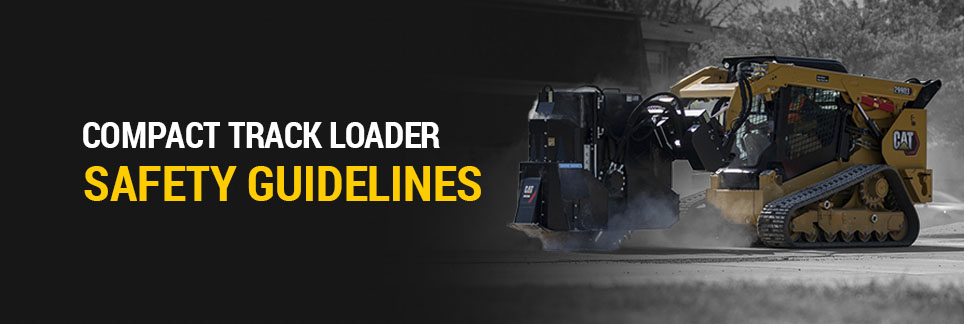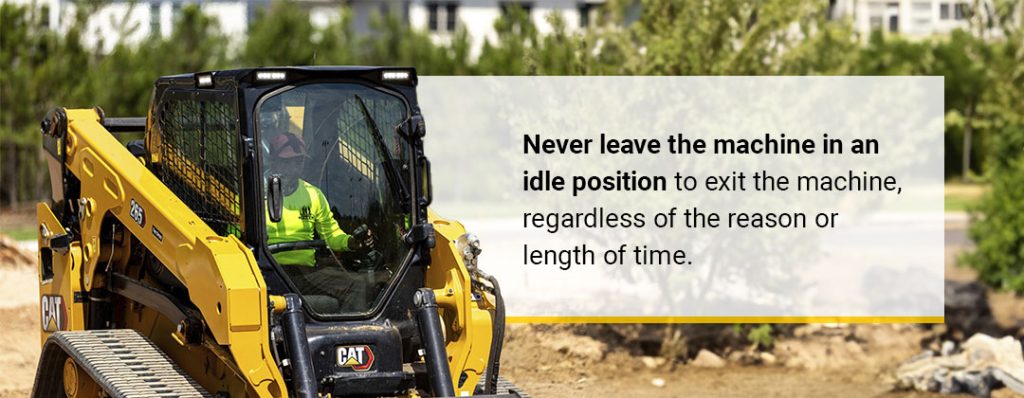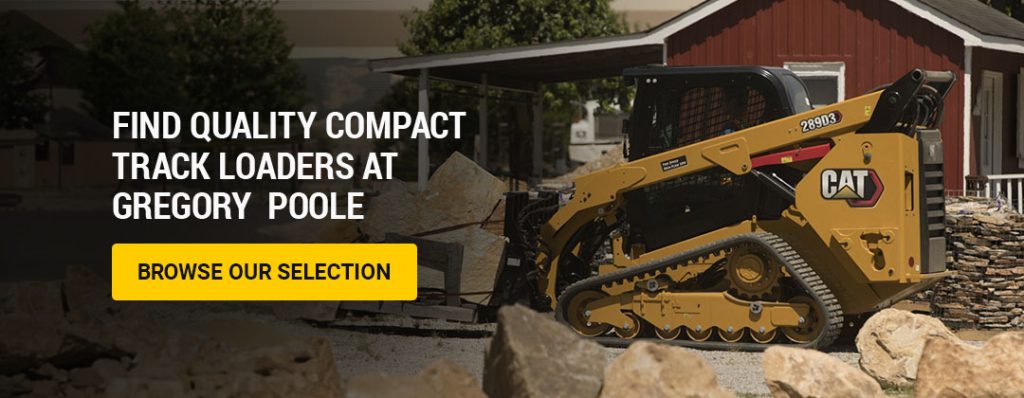
Compact track loaders (CTLs) are versatile pieces of equipment, making them a popular asset for teams completing construction, landscaping, trenching, demolition and other similar tasks. These machines have immense capabilities, allowing operators to dig trenches, dump and carry materials, remove debris and snow, and complete additional jobs necessary for various projects.
Many teams see the benefits of enhancing their fleets with this equipment, as they can increase productivity and efficiency. However, misusing this equipment or not understanding how to operate a track loader properly can have the opposite effect on projects and lead to dangerous or deadly consequences.
Teams must be aware of and follow safety compact track loader safety guidelines to ensure their physical well-being and equipment and project integrity.
Understanding proper safety procedures and following safety guidelines is essential when operating any kind of machinery or equipment. Track loaders are common on many worksites, meaning many workers have opportunities to use or work near this equipment.
While you can use track loaders to accomplish a variety of tasks, there are several essential safety regulations you must adhere to — regardless of your specific application needs — that can help ensure each team member’s well-being. Following proper safety measures can allow you to:
The safe operation of compact track loaders begins with operator training and certification. Only trained and certified workers should operate a compact track loader, and you must ensure each worker stays up-to-date on regulatory information, including when they need to complete additional training sessions or implement new practices.
Training sessions and certification modules provide information regarding the use, maintenance, capabilities and operation of track loaders, providing a crucial foundation for proper usage before stepping foot inside the machine. Along with ensuring operators understand how to use the machine properly, training and certification can allow you to see other benefits, including lowered fuel costs, fewer jobsite errors, less downtime, productivity increases and maximized return on investment on your equipment and technology investment.
Each CTL equipment model can vary, which means your compact track loader safety guide and user manual can address different tips and guidelines for operation. The size, capabilities, recommended usage and similar elements can impact some operational techniques.
While following the specific recommendations and tips for your model is the best way to ensure worker safety, there are some common compact track loader safety tips you can expect to follow across models:

Before attempting any loading or unloading tasks, workers should inspect several elements of the compact track loader:
While it’s nearly impossible to prepare for emergencies, you can reduce potential damage and avoid deadly accidents or injuries by knowing which emergencies might occur, especially for circumstances that may be prevalent in your area or your jobsite. For example, you should be aware of any unique aspects regarding project terrain, environment and other factors that could impact machine function.
If you find yourself in an emergency, it’s essential to understand what to do to minimize potential injuries. Keep in mind that the safest location for an operator during an emergency is typically within the cab. For instance, if the machine starts to tip or fall over, the operator should remain in the cab and avoid jumping out.

Gregory Poole is your one-stop shop for high-quality heavy machinery in North Carolina. We work with some of the industry’s leading manufacturers to ensure our customers can access reliable machines to achieve long-term success. We’re also here to assist you with continued support, offering parts sales and maintenance services to ensure your CTL continues operating safely.
Feel confident in your machines and equipment by choosing a committed provider with an emphasis on safety. Browse our selection of compact track loaders today to find the right model for your project needs. Find a location near you to speak with a team member in person!